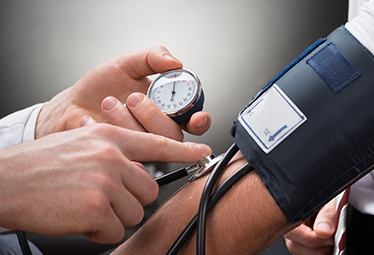
Hypertension, nicknamed “the silent killer”, is a common pathology. It manifests itself as a persistent rise in blood pressure in the arteries, often without apparent symptoms. Yet its consequences can be serious, ranging from cardiovascular disease to brain and kidney damage. Blood pressure is considered hypertensive when it reaches or exceeds 140/90 mmHg in a consultation or 135/85 mmHg in a self-measurement. In people over 65, this condition is particularly widespread, affecting almost one in two people.
Origins and associated risks
Hypertension has many causes. Age plays a major role, as arteries lose their elasticity over time, naturally increasing blood pressure. Genetic predisposition may also be involved, particularly when one or more family members are hypertensive. Lifestyle is another key factor: a diet high in salt, excess weight, lack of physical activity, chronic stress and excessive alcohol consumption are all behaviors that promote hypertension.
In some people, the condition may be a symptom of an underlying disorder, such as sleep apnea or kidney disease. This type of hypertension is called “secondary” and requires specific treatment. If left untreated, hypertension increases the risk of stroke, heart failure, kidney damage and even visual impairment. These often serious complications make screening and management of this disease essential.
Recognizing and managing hypertension in everyday life
Even if hypertension often evolves without symptoms, certain signs can give cause for alarm. Frequent headaches, dizziness, blurred vision or unusual shortness of breath on exertion can all point to excessively high blood pressure. However, a reliable diagnosis can only be made by regular blood pressure measurement, either by a health professional or at home.
Managing hypertension starts with adopting healthy lifestyle habits. A balanced diet plays a central role. Reducing salt intake is crucial, by limiting ready-made meals and sodium-rich foods such as certain cold meats and cheeses. At the same time, focusing on potassium-rich foods, such as green vegetables, fruit (bananas, oranges) and legumes, can help restore the body's sodium-potassium balance. Oily fish and nuts, rich in omega-3s, also help protect the arteries.
Physical activity is another fundamental pillar. Gentle but regular activity, such as brisk walking or swimming, helps strengthen the heart and lower blood pressure. Half an hour of moderate exercise five times a week is enough to achieve noticeable results. Then there's stress management, an often overlooked but essential factor. Meditation, sophrology and yoga are all effective techniques for calming the mind and reducing tension.
The role of medical treatments and complementary approaches
In some cases, lifestyle changes are not enough to control tension, and medical treatment becomes necessary. Antihypertensive drugs, adapted to each individual profile, work by relaxing blood vessels, reducing blood volume or slowing heart rate. Regular follow-up with a healthcare professional is essential to adjust treatment to specific needs.
At the same time, complementary approaches can reinforce treatment. Magnetic therapy, for example, can be an interesting solution. By stimulating microcirculation and promoting relaxation, therapeutic magnets provide natural support for the body.
Avoiding common mistakes
A common mistake is to minimize the importance of hypertension, especially when it causes no apparent symptoms. Yet this condition can develop insidiously, leading to serious complications if left untreated. It is also essential never to stop treatment without medical advice, even if blood pressure seems to have stabilized. Last but not least, it's important to be constantly vigilant about the salt hidden in industrial foods.
Vigilance is good for your health
Hypertension is not inevitable, but it does require constant attention. By adopting a healthy lifestyle, following medical recommendations and exploring alternative solutions such as magnetotherapy, it is entirely possible to control this condition and prevent its complications. A proactive approach, based on prevention and balance, is the best way to preserve your cardiovascular health and live serenely.



